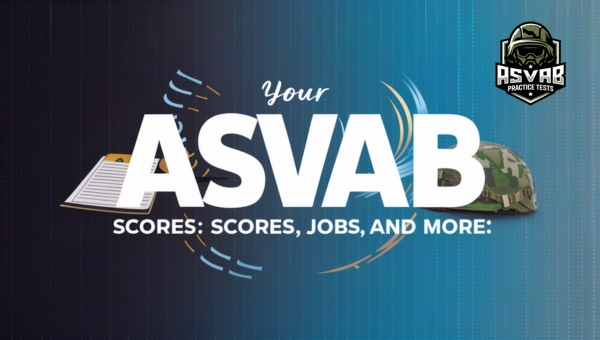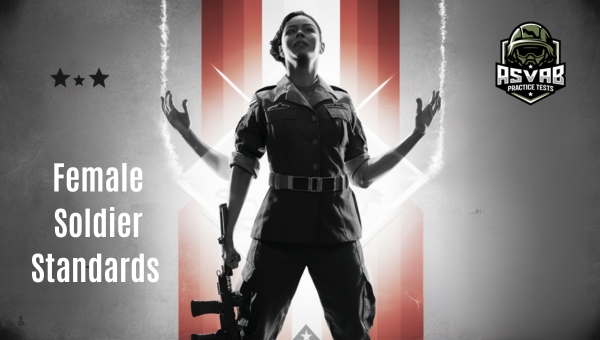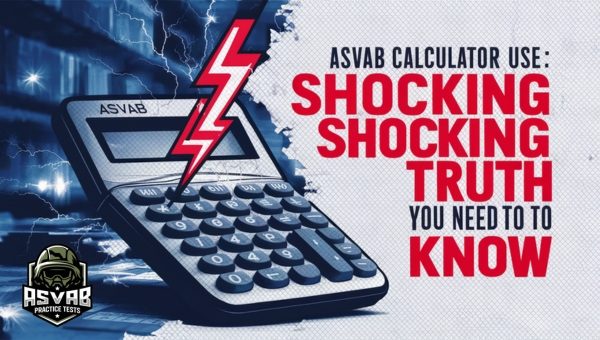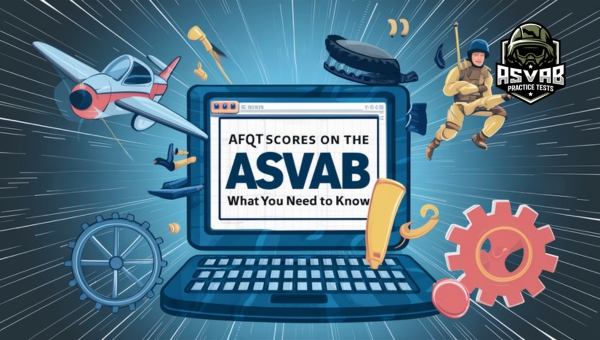The ASVAB Test | Your Best Guide to Scoring High
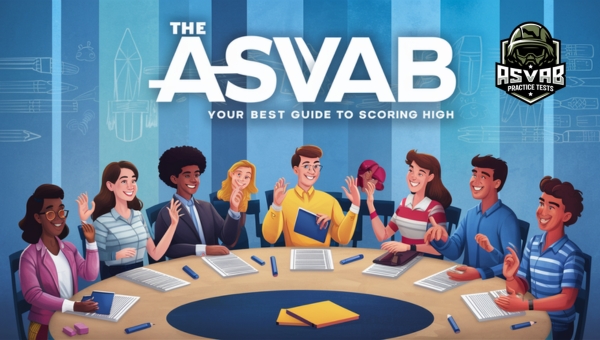
Are you curious about what it takes to score high on the ASVAB Test? This comprehensive guide will walk you through everything you need to know, from the test’s purpose and history to its format, scoring, and key preparation strategies.
By diving into the specifics, you’ll gain a clear understanding of how to tackle the ASVAB Test with confidence. Whether you’re a high school student, a post-secondary student, or someone eager to enlist, we’ve got you covered. Let’s embark on this journey to unlock your potential and achieve your goals!
Overview of Test Sections
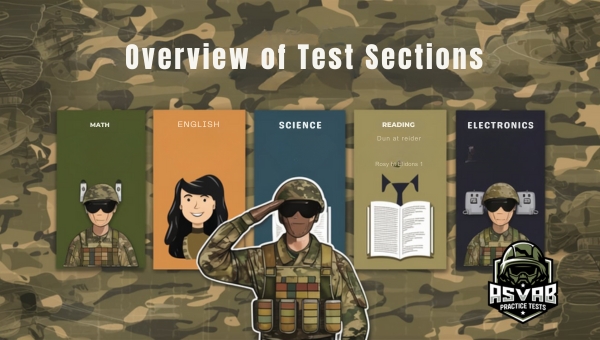
- General Science (GS): Measures knowledge in physical and biological sciences.
- Arithmetic Reasoning (AR): Focuses on solving arithmetic word problems.
- Word Knowledge (WK): Tests vocabulary and the meaning of words in context.
- Paragraph Comprehension (PC): Assesses reading comprehension skills.
- Mathematics Knowledge (MK): Tests knowledge of high school-level mathematics.
- Electronics Information (EI): Assesses understanding of electrical systems.
- Auto and Shop Information (AS): Covers automotive and workshop fundamentals.
- Mechanical Comprehension (MC): Evaluates knowledge of mechanical and physical principles.
- Assembling Objects (AO): Measures spatial relationship skills.
Purpose of the ASVAB
The ASVAB Test serves as a crucial tool for determining an individual’s strengths and potential for success in military and civilian careers.
It assesses a wide range of skills and knowledge areas, making it an essential step for anyone considering enlisting in the U.S. military. Let’s delve into its history and who typically takes this important test.
History of the ASVAB
The ASVAB, or Armed Services Vocational Aptitude Battery, was first introduced in 1968. Initially developed to predict future academic and occupational success in military occupations, it was adopted by all branches of the U.S. military by 1976.
The test has undergone several updates to enhance its reliability and validity, ensuring it meets modern testing standards. Since its inception, the ASVAB has been a fundamental part of the military recruitment process, helping match recruits with roles where they are likely to excel.
Who Takes the ASVAB?
The ASVAB is not just for those who have already decided to join the military; it is available to a wide range of individuals.
Here’s a look at who typically takes the test:
- High School Students: Many high schools offer the ASVAB as part of career exploration programs.
- Post-Secondary Students: College students considering military service often take the ASVAB to identify suitable career paths.
- Potential Enlistees: Anyone interested in enlisting in the military, regardless of educational background, is eligible to take the ASVAB.
Whether you are a high school student, a college student, or someone eager to serve in the military, the ASVAB Test is your first step towards a rewarding career. Taking this test can open up a world of opportunities, helping you identify the best fit for your skills and interests.
Also Read: Navy ASVAB Practice Test: Ace Your Exam with Confidence
ASVAB Test Format and Sections
If you’re preparing for the ASVAB Test, understanding the structure and format is crucial. The ASVAB Test comes in two main formats: the Computerized ASVAB (CAT-ASVAB) and the traditional Paper-and-Pencil ASVAB. Each format has its unique features and testing procedures.
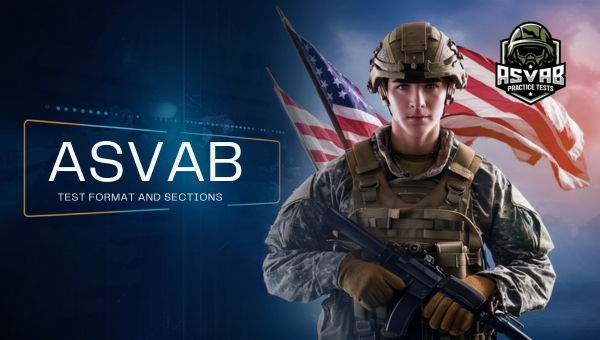
Computerized ASVAB (CAT-ASVAB)
The CAT-ASVAB is an adaptive test that adjusts to your answers as you go along. This means:
- Adaptive Testing: The difficulty of the questions changes based on your previous responses. Answer correctly, and the questions get harder. Answer incorrectly, and they become easier.
- Time Efficiency: The CAT-ASVAB typically takes about 1.5 to 2 hours to complete, making it a quicker option compared to the traditional format.
- Immediate Results: Because it’s computerized, you can often receive your scores immediately after completing the test.
Paper-and-Pencil ASVAB
The traditional Paper-and-Pencil ASVAB is still widely used, especially in schools. Here are the key points:
- Fixed Question Set: Unlike the CAT-ASVAB, this version has a fixed set of questions for everyone, meaning the difficulty level remains constant throughout the test.
- Extended Duration: This format usually takes approximately 3 hours to complete, so it’s important to be prepared for a longer testing period.
- Delayed Results: Scores for the Paper-and-Pencil ASVAB are not immediately available and can take some time to be processed and delivered.
Understanding the format of the ASVAB Test can significantly impact your preparation strategy, ensuring you’re ready to perform at your best on test day.
Scoring and ASVAB Results
When it comes to understanding your performance on the ASVAB Test, it is crucial to grasp how the scoring system works.
Not only does this help in evaluating your strengths and weaknesses, but it also plays a significant role in determining your eligibility for various military roles. Let’s dive into the specifics of ASVAB scoring.
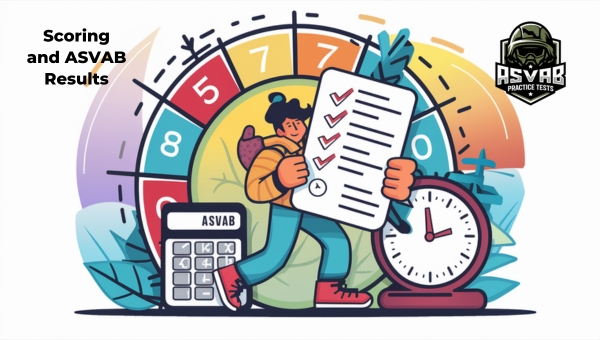
AFQT Scores
The Armed Forces Qualification Test (AFQT) score is a key component of the ASVAB Test. This score is derived from four specific sections:
- Arithmetic Reasoning (AR)
- Word Knowledge (WK)
- Paragraph Comprehension (PC)
- Mathematics Knowledge (MK)
These sections collectively measure your verbal and mathematical skills, which are essential for most military roles. The AFQT score is expressed as a percentile ranging from 1 to 99. This percentile score indicates how well you performed compared to a reference group of test-takers. For example, if you score a 70, this means you did better than 70% of the reference group.
The AFQT score is crucial because it determines your overall eligibility to join the military. Each branch of the U.S. military has its own minimum AFQT score requirements, making it essential to perform well in these sections. A higher AFQT score can also open up more job opportunities within the military.
Composite Scores
Beyond the AFQT score, the ASVAB Test also generates composite scores, known as line scores. These scores are calculated from different combinations of the nine ASVAB subtests.
Each line score corresponds to a specific skill set required for various military occupational specialties (MOS).
Here are some examples of composite scores:
- Clerical (CL): Derived from Word Knowledge (WK), Paragraph Comprehension (PC), Arithmetic Reasoning (AR), and Mathematics Knowledge (MK)
- Combat (CO): Derived from Auto & Shop Information (AS), Mechanical Comprehension (MC), and Arithmetic Reasoning (AR)
- Electronics (EL): Derived from General Science (GS), Arithmetic Reasoning (AR), Mathematics Knowledge (MK), and Electronics Information (EI)
These composite scores help in determining qualifications for specific military jobs. Each MOS has a required line score, and meeting or exceeding that score is essential for eligibility. Thus, it is important to focus on all sections of the ASVAB to ensure a well-rounded performance.
Minimum Score Requirements
Each branch of the U.S. military has set its own minimum AFQT score requirements to ensure recruits meet a certain level of aptitude.
Here are the minimum score requirements for each branch:
- Army: Minimum AFQT score of 31
- Navy: Minimum AFQT score of 35
- Air Force: Minimum AFQT score of 36
- Marines: Minimum AFQT score of 32
- Coast Guard: Minimum AFQT score of 40
These scores are the baseline for enlistment, but higher scores are often required for more specialized roles within the branches. For example, technical or intelligence positions may require higher composite scores, making it essential to aim for the best possible performance across all ASVAB sections.
Understanding these scoring mechanisms can greatly enhance your preparation efforts and help you achieve your desired career in the military. Focus on both the AFQT and composite scores to unlock various opportunities and ensure you meet the specific requirements of your chosen branch.
Also Read: ASVAB Test – Master Your Prep for Success
ASVAB Sections, Questions & Time Limits
The Armed Services Vocational Aptitude Battery (ASVAB) is a key assessment tool used by the U.S. military to evaluate the aptitude of potential recruits.
It is available in two formats: the Computerized Adaptive Testing (CAT-ASVAB) and the Written ASVAB. Each format has distinct sections, number of questions, and time limits.
CAT-ASVAB Test Format
The CAT-ASVAB is an adaptive test, meaning the difficulty of questions adjusts based on the test-taker’s performance. Below are the sections, number of questions, and time limits for the CAT-ASVAB:
| Subject | Questions | Time Limit |
|---|---|---|
| General Science (GS) | 16 | 8 minutes |
| Arithmetic Reasoning (AR) | 16 | 39 minutes |
| Word Knowledge (WK) | 16 | 8 minutes |
| Paragraph Comprehension (PC) | 11 | 22 minutes |
| Mathematics Knowledge (MK) | 16 | 20 minutes |
| Electronics Information (EI) | 16 | 8 minutes |
| Automotive & Shop Information (AS) | 11 | 7 minutes |
| Mechanical Comprehension (MC) | 16 | 20 minutes |
| Assembling Objects (AO) | 16 | 16 minutes |
| Total | 134 | 154 minutes |
Written ASVAB Test Format
The Written ASVAB is a traditional pen-and-paper test. Here are its sections, number of questions, and time limits:
| Subject | Questions | Time Limit |
|---|---|---|
| General Science (GS) | 45 | 20 minutes |
| Arithmetic Reasoning (AR) | 30 | 36 minutes |
| Word Knowledge (WK) | 35 | 11 minutes |
| Paragraph Comprehension (PC) | 15 | 13 minutes |
| Mathematics Knowledge (MK) | 25 | 24 minutes |
| Electronics Information (EI) | 20 | 9 minutes |
| Automotive & Shop Information (AS) | 25 | 11 minutes |
| Mechanical Comprehension (MC) | 25 | 19 minutes |
| Assembling Objects (AO) | 25 | 15 minutes |
| Total | 245 | 158 minutes |
ASVAB Test Preparation
Preparing for the ASVAB Test can seem overwhelming, but with the right resources and strategies, you can improve your chances of success. Let’s delve into some essential study guides, the importance of practice tests, and effective time management tips to help you ace the test.
Study Guides and Resources
A variety of study guides and resources are available to help you prepare for the ASVAB Test. Here are some top recommendations:
- ASVAB For Dummies: This book offers comprehensive coverage of all test sections, along with practice questions and full-length practice tests.
- Kaplan ASVAB Prep Plus: Known for its detailed explanations and practice tests, this book is a valuable resource.
- Official ASVAB Study Guide: Provided by the U.S. Department of Defense, this guide includes sample questions and test-taking strategies.
- Online Resources: Websites such as ASVAB Practice Tests and Military.com offer free practice questions and additional study materials.
Importance of Practice Tests
Taking multiple practice tests is crucial for familiarizing yourself with the ASVAB Test format and timing. Here’s why practice tests are so important:
- Familiarity with Test Format: Practice tests help you get used to the types of questions you’ll encounter.
- Identifying Weak Areas: By analyzing your practice test results, you can identify which sections need more focus.
- Building Confidence: The more you practice, the more confident you’ll feel on test day.
- Improving Speed and Accuracy: Regular practice helps you become quicker and more accurate in answering questions.
It’s important to note that practice tests should mimic the actual test conditions, including timing each section to ensure you’re managing your time effectively.
Time Management Tips
Effective time management is essential for tackling the ASVAB Test, especially since each section is timed.
Here are some strategies to help you manage your time on test day:
- Know the Time Limits: Familiarize yourself with the time limits for each section. For example, the Arithmetic Reasoning section typically has 36 minutes for 30 questions.
- Prioritize Questions: If you find a question particularly challenging, move on to the next one and come back if time permits. This prevents you from getting stuck and wasting valuable time.
- Practice Pacing: Use practice tests to develop a sense of how much time to allocate per question. Aim to spend about 1-2 minutes on each question, depending on the section.
- Stay Calm: Anxiety can slow you down. Practice relaxation techniques, such as deep breathing, to stay calm and focused during the test.
By incorporating these study guides, practice tests, and time management tips into your preparation, you’ll be well-equipped to succeed on the ASVAB Test. Good luck!
Conclusion
The ASVAB Test is a crucial step for anyone considering a career in the U.S. military. Understanding its purpose, format, and scoring can significantly enhance your preparation efforts. From the computerized CAT-ASVAB to the traditional paper-and-pencil version, each format has unique features worth noting.
Additionally, knowing the minimum score requirements and focusing on effective test preparation strategies can make a substantial difference. For more insightful articles and tips, be sure to explore our other blog posts. Dive deeper into the world of military testing and start your journey with confidence!


